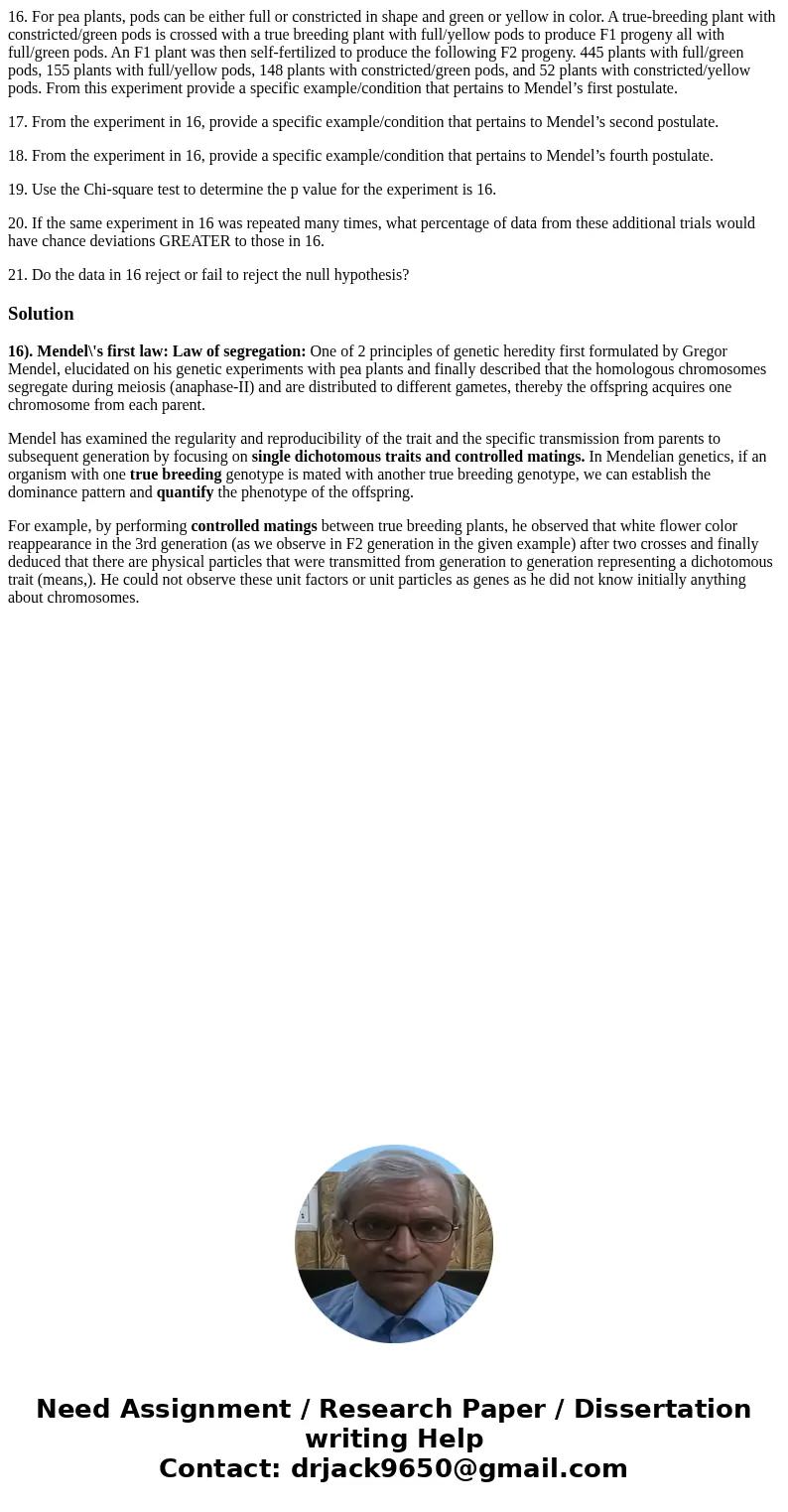16 For pea plants pods can be either full or constricted in
16. For pea plants, pods can be either full or constricted in shape and green or yellow in color. A true-breeding plant with constricted/green pods is crossed with a true breeding plant with full/yellow pods to produce F1 progeny all with full/green pods. An F1 plant was then self-fertilized to produce the following F2 progeny. 445 plants with full/green pods, 155 plants with full/yellow pods, 148 plants with constricted/green pods, and 52 plants with constricted/yellow pods. From this experiment provide a specific example/condition that pertains to Mendel’s first postulate.
17. From the experiment in 16, provide a specific example/condition that pertains to Mendel’s second postulate.
18. From the experiment in 16, provide a specific example/condition that pertains to Mendel’s fourth postulate.
19. Use the Chi-square test to determine the p value for the experiment is 16.
20. If the same experiment in 16 was repeated many times, what percentage of data from these additional trials would have chance deviations GREATER to those in 16.
21. Do the data in 16 reject or fail to reject the null hypothesis?
Solution
16). Mendel\'s first law: Law of segregation: One of 2 principles of genetic heredity first formulated by Gregor Mendel, elucidated on his genetic experiments with pea plants and finally described that the homologous chromosomes segregate during meiosis (anaphase-II) and are distributed to different gametes, thereby the offspring acquires one chromosome from each parent.
Mendel has examined the regularity and reproducibility of the trait and the specific transmission from parents to subsequent generation by focusing on single dichotomous traits and controlled matings. In Mendelian genetics, if an organism with one true breeding genotype is mated with another true breeding genotype, we can establish the dominance pattern and quantify the phenotype of the offspring.
For example, by performing controlled matings between true breeding plants, he observed that white flower color reappearance in the 3rd generation (as we observe in F2 generation in the given example) after two crosses and finally deduced that there are physical particles that were transmitted from generation to generation representing a dichotomous trait (means,). He could not observe these unit factors or unit particles as genes as he did not know initially anything about chromosomes.

 Homework Sourse
Homework Sourse